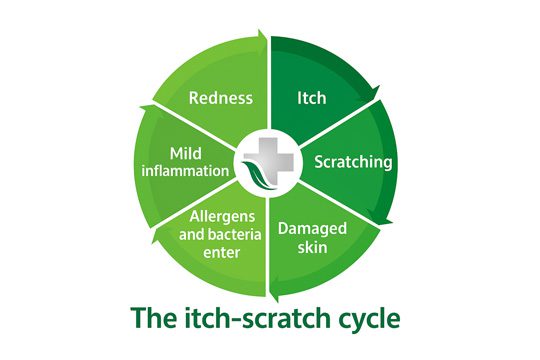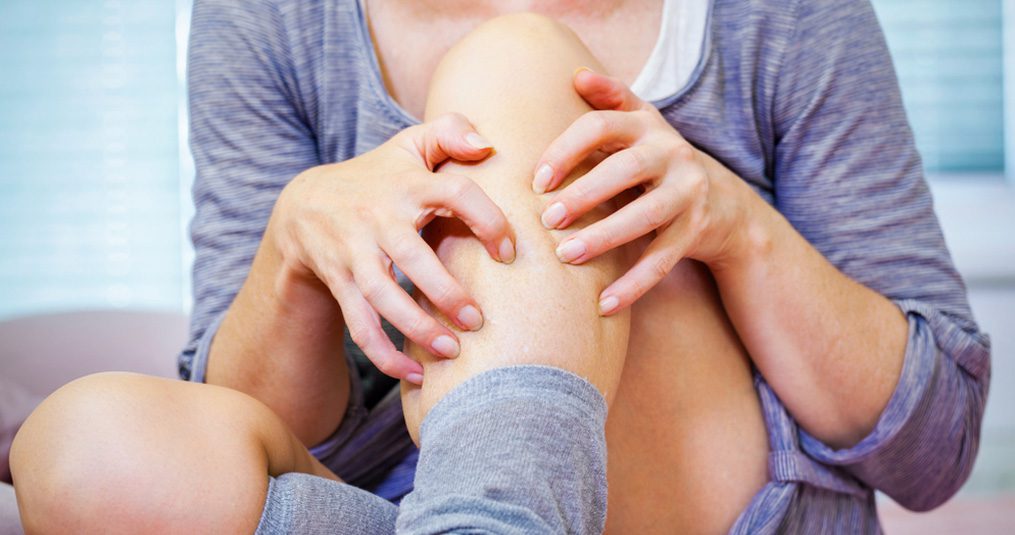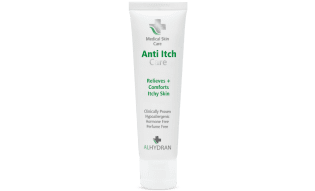Why are my legs so itchy? Causes and how to stop it
Do your legs feel itchy without a clear cause? You’re not alone. Many people experience this, especially at night. Common triggers include dryness, shaving, soap residue, allergies, or circulation issues. If the itch keeps returning, an underlying skin or vascular condition may be the cause. Discover what’s behind the itch and how to relieve it safely.
Understanding why your legs itch
Your skin can start itching for many different reasons. Some are related to external triggers, others come from internal causes.
Below, we briefly explain these external and internal causes.
External Causes
External factors are influences from outside your body.
- Dryness: Cold weather, wind and overwashing strip the skin of its natural oils. When the surface becomes too dry, tiny cracks form, leading to tightness and itch, especially on the lower legs, where there are fewer oil glands.
- Irritation after shaving: Shaving doesn’t just remove hair. It also scrapes off part of the protective lipid layer of your skin. This makes freshly shaved legs more prone to redness, stinging and itch, especially when exposed to heat or soap.
- Detergents and fabrics: Harsh laundry detergents, perfumes, or tight synthetic fabrics can irritate the skin barrier. These substances can leave residues that may cause contact irritation, leading to itching or burning sensations.
- Sweat and heat: Warm environments or tight clothing trap sweat against the skin. The combination of moisture and friction weakens the barrier, encouraging irritation and itch, a common issue during workouts or hot weather.
Internal Causes
Internal causes are changes inside the body.
- Eczema or dermatitis: These chronic inflammatory skin conditions can make the skin dry, red and extremely itchy. The skin barrier becomes weaker, allowing irritants and allergens to trigger further inflammation.
- Psoriasis: This condition speeds up skin cell turnover, creating thick, scaly patches that often itch or sting. Even when the skin looks healed, underlying inflammation can keep the area sensitive.
- Poor circulation or varicose veins: When blood pools in the lower legs, fluid seeps into surrounding tissue, causing swelling and skin tension. This can make the legs feel dry and itchy, especially around the ankles.
- Hormonal changes or systemic conditions: Hormonal shifts (for example during menopause or pregnancy) can dry the skin. Likewise, chronic conditions such as diabetes, liver or kidney disease can alter circulation and moisture balance, leading to persistent itching.
Regardless of what causes your itchy legs, whether it’s dry skin, eczema, or poor circulation, many people notice that the itching tends to get worse in the evening.
Why itching can get worse at night
Many people notice that itching becomes stronger in the evening or at night. This happens because your body temperature and blood flow to the skin slightly increase when you rest, which can make nerve endings more sensitive.
At the same time, the skin loses more moisture overnight, especially in dry indoor air. With fewer distractions at bedtime, your brain also focuses more on the itching sensation, making it feel more intense.
Research from Harvard Health explains these nighttime changes in more detail, showing how body temperature, moisture loss and nerve sensitivity all play a role in increased itching.
How to stop the itch
Itching is your body’s way of signalling irritation or barrier damage. But the more you scratch, the more inflammation builds up, and the itch comes back even stronger.
Understanding the itch-scratch cycle
When your skin itches, scratching gives a few seconds of relief but breaks the skin’s outer layer. This increases inflammation, making nerves more sensitive – so the itching gets worse. Calming the skin before scratching happens is the key to recovery.
The image below shows how this itch-scratch cycle keeps repeating and why breaking it is important for healthy skin.

Breaking that cycle starts with gentle, consistent care. Fortunately, there are simple things you can do every day to soothe the itch and protect your skin.
Relieving irritation with anti itch cream
When your legs feel dry or irritated, restoring and protecting the skin barrier is key. Ordinary moisturisers often evaporate too quickly to break the itch-scratch cycle, but ALHYDRAN Anti Itch Care works differently.
Its formula combines deep hydration with a semi-occlusive layer that prevents further water loss while allowing the skin to breathe. The result: long-lasting moisture and faster barrier recovery.
The cream contains Aloe Vera (45%), Vitamin E, and iCool ML (menthyl lactate), a hypoallergenic cooling complex, that soothes itch without the irritation menthol can cause. Together, these ingredients calm redness, reduce the burning sensation after scratching, and restore comfort to sensitive skin.
Clinically, ALHYDRAN has been shown to reduce itching and redness, improve skin elasticity, and support healing in conditions ranging from burns to eczema.
Discover ALHYDRAN Anti Itch Care
When to see a doctor
Most cases of itchy legs improve with good daily care. However, see a doctor or dermatologist if:
- Itching lasts more than two weeks despite moisturising.
- The skin becomes cracked, swollen, or infected.
- You feel unusually tired, feverish, or notice yellowing of the skin.
- You have varicose veins or persistent swelling of the ankles.
These symptoms may signal circulation issues or another condition that needs medical attention.
Summary
Itchy legs are a common problem that often comes from dry skin, irritation or circulation issues. The discomfort can intensify at night as your body temperature and skin sensitivity change.
Gentle care, daily moisturising and a soothing medical cream such as ALHYDRAN Anti Itch Care can help reduce itching, calm irritation and keep your skin comfortable.


